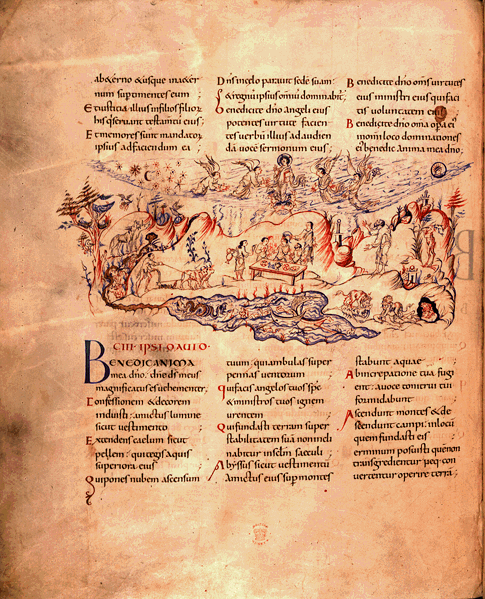
© The British Library
A script ultimately developed from Roman Half Uncial and its cursive version, which had given rise to various Continental minuscule scripts, combined with features from the Insular scripts. It was created partly under the patronage of the Emperor Charlemagne (hence Carolingian). With his interest in learning (though he himself learned to write late in life, and maintained that his fingers had been ruined for the pen by being trained to the sword), he sent for the English scholar Alcuin of York to run his palace school and scriptorium.
His scholars copied Roman texts - indeed most of our knowledge of classical literature derives from copies made in the court of Charlemagne - and was thus adopted by Renaissance Italian printers to present their editions. It is the basis of our modern typefaces.
This is fol 51v from the Harley Psalter, BL MS Harley 603, written in Christ Church, Canterbury, somewhere between 1010 and 1030 AD. It is a copy of the Utrecht Psalter, written in Reims c.820, and remarkable for the lively colour drawings which illustrate the themes of each psalm. The Utrecht Psalter is however written in Roman Rustic.

You cannot really read the script here because I had to reduce it so much: it merely shows you the general layout.
| 1.Transcribe it, paying particular attention to the abbreviations. | Feedback |
| 2. Copy out a line, using pen and ink. What do you notice about the mechanics of writing? | |
| 3. Describe it in terms of | |
A. Individual letter forms. |
Feedback |
B. Overall aspect; |
Feedback |
| 4. Describe the layout. | Feedback |
| 5. Are there any gaps between the words? | Feedback |
© MEG TWYCROSS 1999